
In India we always called our epics itihas [history]. The Ramayana and Mahabharata are itihas. It’s only since Max Müller that we were taught: Hey listen, this is myth, this is not historical narrative. I’m not willing to accept that.
Take the Mahabharata. It started off with less than 25,000 verses of a work called Jaya, which morphed into a work of roughly 50,000 verses called the Bharat, which then morphed into the 100,000 verses of the Mahabharat. We attribute all of this to one single writer, the Rishi Vyasa. I believe that’s almost like a nom de plume, a pseudonym, for multiple writers who wrote through the generations. But do you think multiple generations would have spent their time narrating that story if there wasn’t a kernel of truth to the events that happened?
We have 300 versions of the Ramayana, and each version is remarkably different. You have the Valmiki Ramayana, in which Ram is simply a human being, a mortal. You have the Tulsi Ramayana, in which he is elevated to the status of a God. You have versions like the Adbhuta Ramayana, in which it isn’t Ram who kills Ravana, but Sita who manifests as Durga. You have the Jain Ramayana, in which Lakshman kills Ravana. You have versions like the Muslim Ramayana, in which Ram is a Sultan, or the Lao Ramayana, in which Ram is a Bodhisattva.
But at the core, there are elements of the story that remain common throughout. And why would there be 300 versions of a story that never happened? So I believe what we need to do is to find that enticing, exciting overlap zone where history intersects with myth. And there is a lot we can gain by examining it closely. The problem is that mainstream academia has shied away from looking at these things.
この記事は Heartfulness eMagazine の January 2020 版に掲載されています。
7 日間の Magzter GOLD 無料トライアルを開始して、何千もの厳選されたプレミアム ストーリー、9,000 以上の雑誌や新聞にアクセスしてください。
すでに購読者です ? サインイン
この記事は Heartfulness eMagazine の January 2020 版に掲載されています。
7 日間の Magzter GOLD 無料トライアルを開始して、何千もの厳選されたプレミアム ストーリー、9,000 以上の雑誌や新聞にアクセスしてください。
すでに購読者です? サインイン
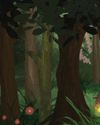
A Flower from THE HEAVENS
November 14 is Children's Day. This year, SARA BUBBER brings to you a world of forests, magical flowers, festivals, and some animals you may have never seen.

Meeting Phenomenal Women
The author, CHITRA BANERJEE DIVAKARUNI, is interviewed here by TARA KHANDELWAL and MICHELLE D'COSTA about her books on mythology, like The Palace of Illusions, which is a retelling of the Mahabharata from Draupadi's point of view, and The Forest of Enchantments, which is a retelling of the Ramayana, from the eyes of Sita. And there's The Last Queen, which is about Rani Jindan's life.
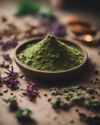
HERBAL TOOTH POWDERS: Rediscovering Ayurveda's Natural Secrets
SRAVAN BANDA presents a natural herbal tooth powder, offering a holistic approach to oral hygiene, harnessing the power of medicinal herbs.

The Dance of Light and Shadow Lessons from the Dolomites
ALAIN DESVIGNE explores the Dolomites, listed as a UNESCO World Heritage Site in 2009.
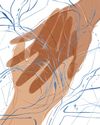
FINDING OUR WAY
A Polynesian Explorer's Journey of Discovery
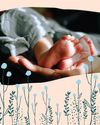
The First Imprint: Understanding PTSD
CHRISTIANNA DEICHMANN is the Director of Education at the Association for Pre and Perinatal Psychology and Health (APPPAH), where she educates both professionals and parents on fostering the most nurturing environments for welcoming new life into the world.

The Tipping Point
In this final conversation of the series, J. FREDERICK ARMENT continues to talk with CHRISTINE JONES about promoting peace in the world.
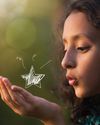
UNLOCK YOUR POTENTIAL
Take The Brighter Minds Path To Cognitive Development

The Intrinsic Goodness of the Heart
DAAJI shares some thoughts on heartfelt acceptance and all it has to offer. He says, \"It is the heart's intrinsic goodness that allows us to accept everything as part of us.
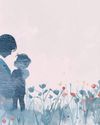
How Does Fear Affect Our Roles as Mothers? - Neelam Shivhare explores some of the great ancient texts of India on motherhood, compares the behavior of Kaikayi and Yashoda
Neelam Shivhare explores some of the great ancient texts of India on motherhood, compares the behavior of Kaikayi and Yashoda, and realizes the importance of removing fear from our hearts in order to nurture our children.For young women like myself, who are future mothers, I trust we are on the path of becoming selfaware and brutally honest with ourselves. We are creative beings, never forgetting the gifts with which we have been bestowed— the love and tenderness, natural instincts, and intuition to feel the right path. It all lies in the mysterious meanderings of the heart. Are we really listening to our hearts, or confusing the bombarding information on social media with reality?